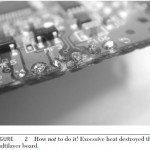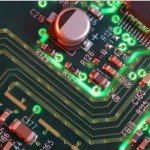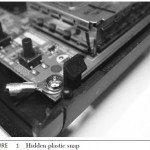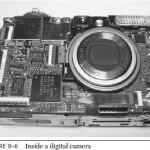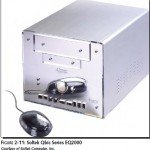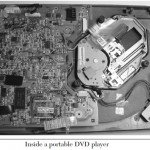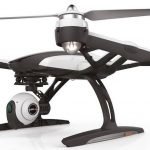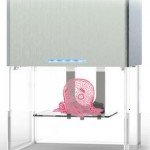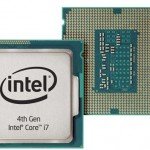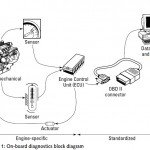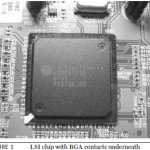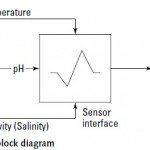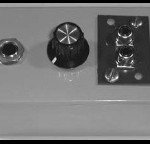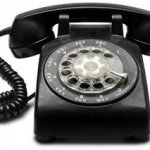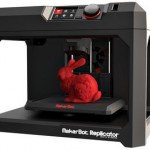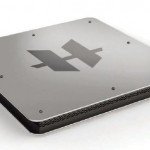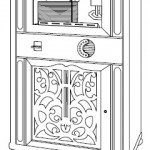Recognize Major Feature of A Circuit Board
When you’re dealing with a Circuit Board. One thing you have to do is recognize it’s Major Feature. If you don’t know it, you will be ended up breaking it. Older products, including those with double-sided circuit boards, usually had components only on one side. Not anymore! Thanks to the complexity and size of today’s gadgetry, parts are mounted on both sides. Components that stick up, like transformers and can-style electrolytic capacitors, are often relegated to one side so the board can fit flush against the case. Everything else is fair game. Transistors, chips, resistors and small inductors and capacitors may be anywhere. As you wend your way through a circuit’s path, you can expect to flip the board over numerous times.
To find your way around in a box crammed full of parts, wires and boards, you need to become acquainted with what the major sections of the product look like, how components tend to be laid out, and how to follow connections from recognizable features back to those less obvious.
Though the features vary a great deal depending on the product’s function, pretty much every device has a power supply section, an input section (or several), some kind of signal processing and one or more output sections. Let’s look at some common circuit sections and how to locate them.
Find the Circuit Power !! Power Supplies
Everything has a power supply of some kind. It could be a pair of AA cells, a simple linear supply or a complex switching supply with multiple voltage outputs. Power supply problems account for many repairs, so recognizing the power supply section is vital.
Batteries, obviously, are hard to miss. Battery-powered devices may have other power supply components as well, though, such as a switching converter to step up a single AA cell’s 1.5 volts to a level high enough to run the product. Even when the battery voltage would be adequate on its own, a device may include conversion and regulation to ensure that a weak battery doesn’t affect the reliability of writing to memory cards or hard drives, both of which can be seriously scrambled by insufficient voltage during write operations. Digital cameras and laptops have such systems so they can operate properly until the battery is nearly dead and then shut down the device gracefully.
To find voltage converters and regulation systems in battery-powered gear, look for small inductors and transformers. There are many varieties of them, but the telltale sign is metal. These things don’t look anything like transistors and chips. They may be round or square, but most are made from ferrite material, which is a darkish metal with a matte surface. Toroid (doughnut-shaped) cores are common. You may be able to see the wire wrapped around the core, but don’t count on it. See Figure 1.
Along with these, keep an eye out for electrolytic capacitors. Although ’lytics can be sprinkled throughout any circuit, the larger ones tend to be congregated in or near power supply sections. Diodes and voltage regulators will be found there too. Most very small products don’t use enough current to require heatsinks on regulators and switching transistors, but larger devices usually do.
It might seem natural that you could follow the wires from the battery compartment straight to the supply section, but it doesn’t always work out that way. Much of today’s gear uses transistor switching driven by a microprocessor to turn itself on and off, rather than a real power switch actually interrupting the current between the batteries and the circuit. There may be some distance from where the batteries connect to the board and the location of the voltage conversion and regulation circuitry. Those little transformers are your best landmarks.
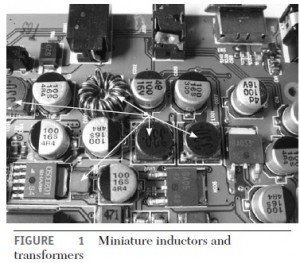 In AC-powered products, finding the power supply is a lot easier. Follow the AC cord and it’ll get you there! Hard switches are still used in some AC devices, but those with remote controls, like VCRs, DVRs, TVs and some projectors, use the same microprocessor-controlled soft switching found in battery-op gadgets, so you can’t count on the on/off switch’s being in line with the AC cord. Look for a transformer. Switching supplies are pretty much standard now, but some products, especially high-end audio amps and receivers, still use linear supplies for their essentially noiseless operation. The transformer in a linear supply is a lot larger than the one in a switcher. In a switcher, look for a transformer like that.
In AC-powered products, finding the power supply is a lot easier. Follow the AC cord and it’ll get you there! Hard switches are still used in some AC devices, but those with remote controls, like VCRs, DVRs, TVs and some projectors, use the same microprocessor-controlled soft switching found in battery-op gadgets, so you can’t count on the on/off switch’s being in line with the AC cord. Look for a transformer. Switching supplies are pretty much standard now, but some products, especially high-end audio amps and receivers, still use linear supplies for their essentially noiseless operation. The transformer in a linear supply is a lot larger than the one in a switcher. In a switcher, look for a transformer like that.
The power supply sections of pocket-sized devices are likely to be on the main circuit board, while those in AC-powered devices are almost always located on a separate board, with a cable feeding the output to the rest of the circuitry.
Once you’ve located the power supply, its major features are easy to spot. In a switcher, the AC line will go through a line filter that looks like a small transformer, then through a fuse, and on to the rectifiers, which may be separate diodes, a bridge rectifier or a double diode, depending on the design. After that comes the chopper transistor, which is probably heatsinked. Near it will be a large electrolytic capacitor with a voltage rating in the hundreds. Then comes the transformer, followed by the low-voltage rectification and regulation circuitry. At the very end, right by the output wires, you’ll see the large electrolytic filter caps with significantly lower voltage ratings than on the one next to the chopper.

